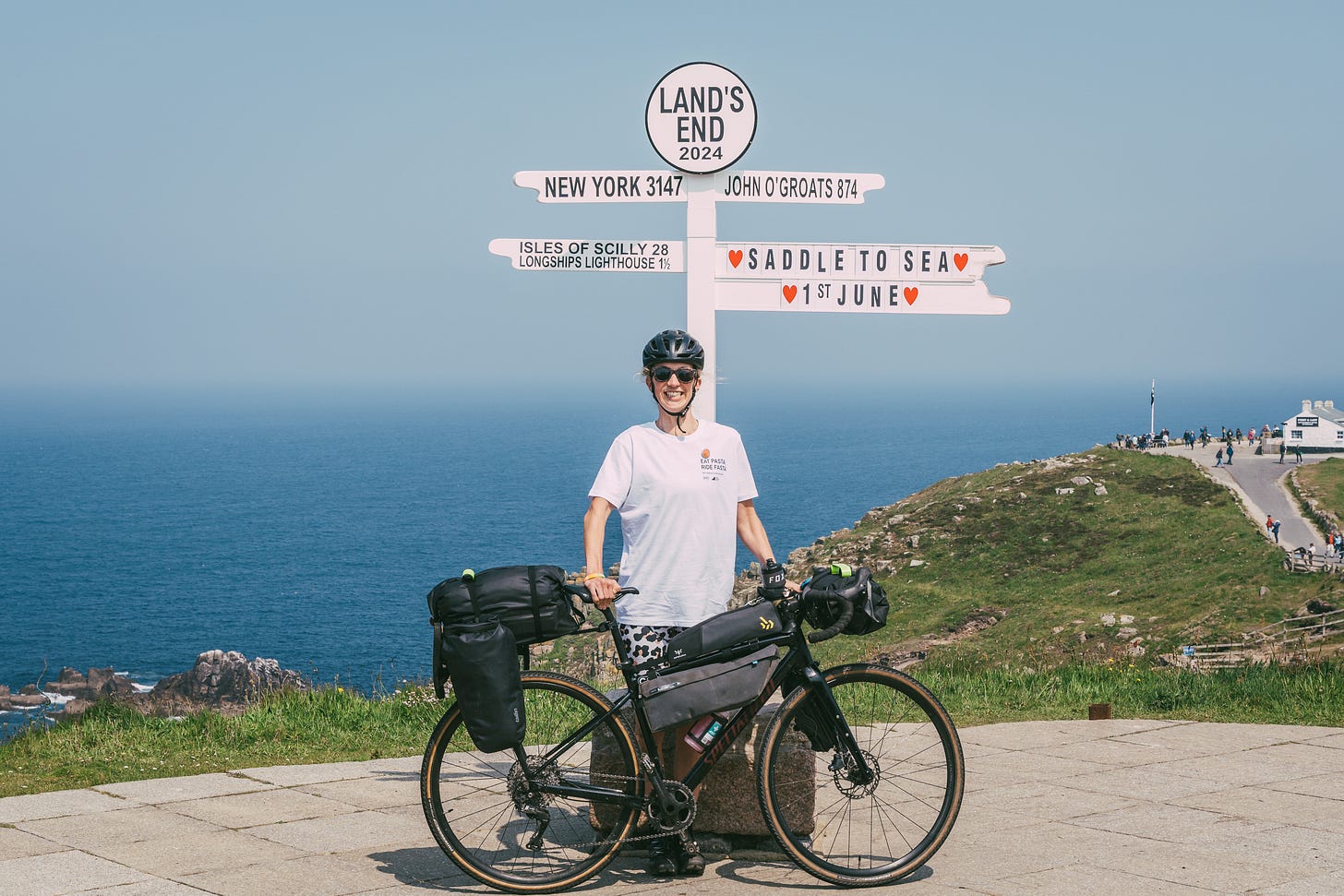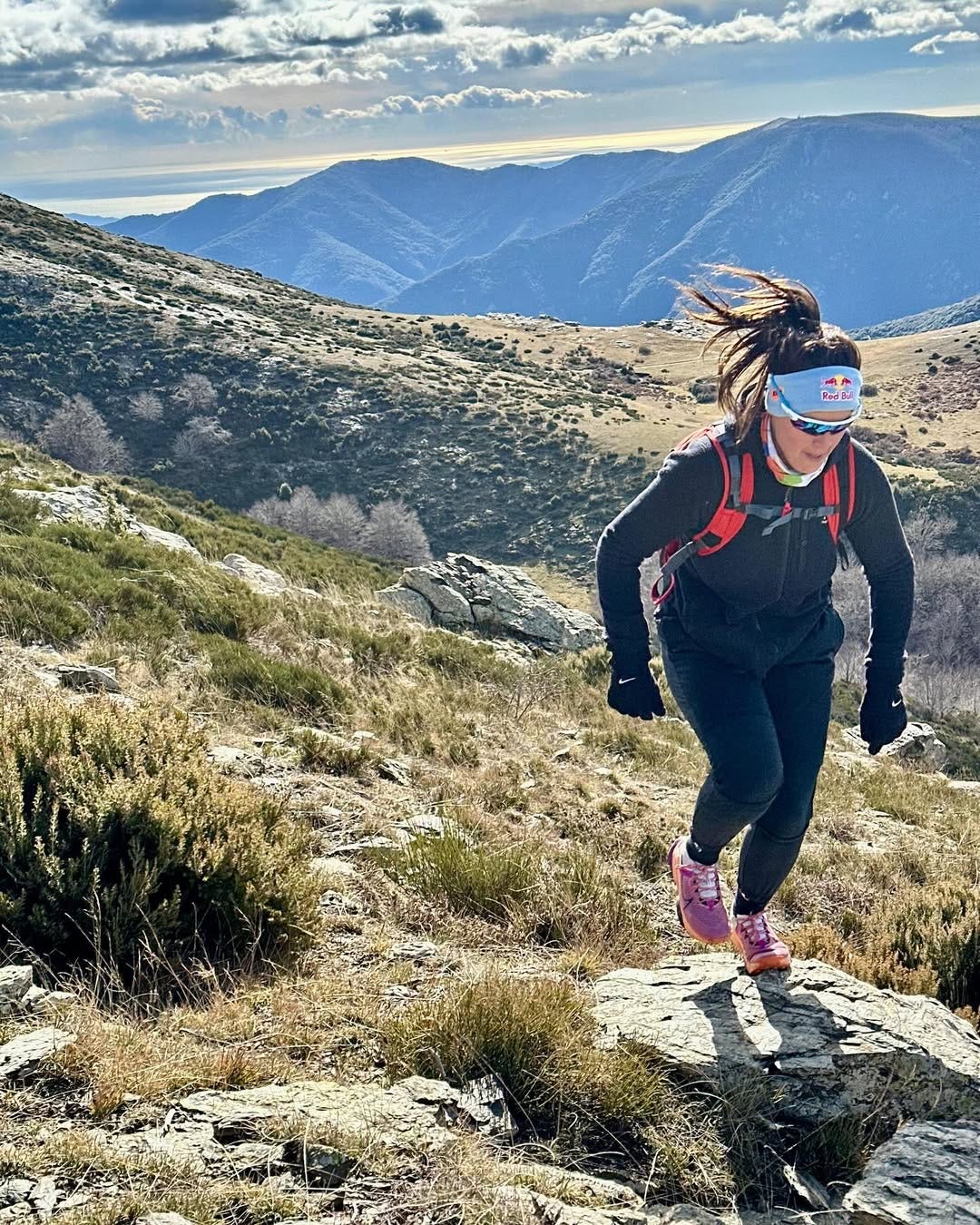Cycling 3,500 miles around the UK coastline
Plus: what does sustainability mean to you? Vote in the poll
This week I want to introduce you to Katy Roberts. Last year, Katy cycled around the coast of mainland Britain in memory of her father and to raise funds for those affected by suicide. During the 78 days it took her, she swam, cycled, camped, went through highs and lows and met people she won’t forget.
In our interview, she recalls some of these people and the deep conversations and talks about her takeaways and learnings from the trip about herself, other people and things she noticed about places in Britain.
Read the story here.
Repairing clothes & thoughts on sustainability
Last week, I took two pairs of Levi’s and a set of Burberry jeans to a clothing repair shop in town to have the holes in the crotch patched. I’d previously tried patching them myself, but it was about time somebody more skilled than me did it.
They are old jeans - I bought them over a decade ago, and buying decent quality back then paid off. Aside from the holes, they are in good nick elsewhere, fit perfectly, so why bin them?
The woman who runs the shop hesitantly told me it would be £10 for each patch required, meaning £60 in total, so I paid her. She added that some people baulk at the cost of repairing or altering clothes. I said one new pair of Levi’s would be at least £100 - let alone buying three new pairs - so £60 to repair three sets was saving me money and (sort of) saving the planet. And there are a lot of skills that go into salvaging things like this (anyone seen The Repair Shop on the BBC?).
I picked them up a few days later and obviously, she had done a wonderful job - their life has been extended by at least another decade. I’m not £300 lighter, I supported a small business - a win all around.
To me, this is what sustainability is about - using what you have until the end of its life, repairing it if necessary, re-purposing, or re-homing it if you can.
There are times when things are more expensive to repair than they are worth - perhaps ‘buy cheap, buy twice’ comes in here, or it cannot be repaired (swimwear); and it seems mad to replace something good quality with something lower in quality. On this occasion, the jeans worked out cheaper to repair than replace, saved going to waste, and I always think it’s better to try even if you give it a go yourself to save money.
A few months back, I wanted to get the zip pocket fixed on an old bag I got from a triathlon in 2014. Aside from the zip, the rest of it is perfect and it’s a handy bag to use. I contacted the company to see if they could fix it if I posted it to them, but they rejected the request and said it would be “uneconomical” to fix it and to just buy a new one.
I didn’t want a new one - I got it from a British Championships race and it had sentimental value as it was covered in race stickers. There was no other way for me to fix it, so it’s still broken.
Plenty of other people have found nifty ways to repair and repurpose things, particularly in fell running. People repair running packs, bags, coats, shorts, jumpers and so on, and the creativity can be something to behold. Whether you do it yourself or pay for a service doesn’t matter, there are enough small or large companies offering it now, and even cobblers can do Vibram soles for trainers which seems like a game-changer.
I also saw someone who had turned an old worn pair of fell shoes into winter spikes by putting some studs (or ‘dobs’) on the sole which I thought was a great idea for re-purposing. And come to think of it, I remember seeing swimming bags made out of old boat sails somewhere online because there’s a surplus and they are waterproof.
There’s nothing wrong with buying new clothes - I am a sucker for a sale - but I also don’t see the shame in clothes that are patched up, faded colours or old brands that have changed logos or no longer exist - especially sportswear. In my mind, sportswear gets sweaty/muddy/rained on and when you’re going to be so remote only sheep will see you, does it matter what it looks like as long as it is comfortable and still functions?
Plenty of Gen Zs love dressing like the 1990s because they believe it’s ‘vintage’; and “pre-loved” is a term that’s unashamedly used, with apps like Vinted, which sells unwanted clothes, more popular than ever.
I’ve had several conversations with people about sustainability in running and the outdoor industry at large recently (there must be something in the air). Repairing, re-purposing, and re-homing clothes is nothing new, it’s just more focal with fast fashion under the spotlight in the global climate crisis and running is now so popular it’s included in that group.
People interpret the subject differently, and there are debates over whose responsibility it is and what to do about it. There is also a conflict between what brands and the industry think people want and what they actually want.
So let me ask you:
What does sustainability mean to you?
Recommendations
Why Katy Roberts cycled around the UK
‘The outdoors for normal people’ -
Formula E team Jaguar TCS Racing launch sustainable kit
Multiple world motorcycling champion and Dakar Rally legend, Laia Sanz, will take part in a 48-hour ‘Everesting’ challenge in Ordino-Arcalís, Andorra from May 29. The challenge involves 19 ascents of a 3km climb with 480m of elevation to complete the challenge of 8,848 metres, equivalent to Everest.








Ive got a tent that's needs repairing, that's been on the to do list for a while. I need to find a seamstress and the load it up on seam seal.
I’ve used the Rab repair service several times for my outdoor gear. I seem to have a habit of ripping items on barbed wire 🙄 It saved me hundreds of pounds. I also need to track down the guy that repairs goretex footwear to fix my boots, come to think of it!